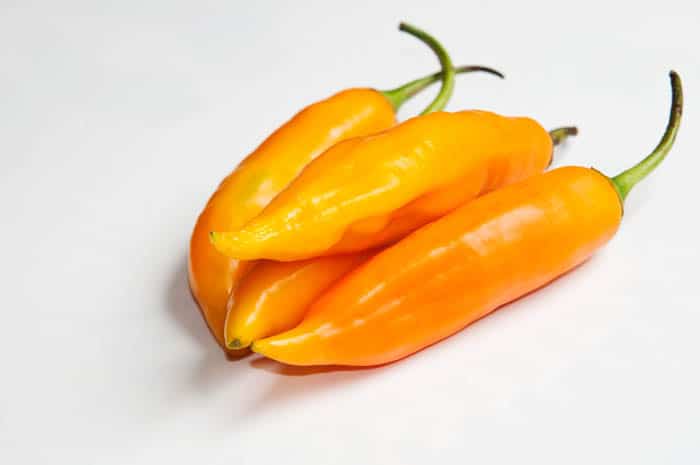Yellow pepper: Peruvian flavor par excellence
Since I discovered the yellow pepper my life has not been the same. This wonderful product has a distinctive flavor and a perfect spicy level. I use it very often to prepare a large number of dishes, not just Peruvian ones.
Yellow chili is possibly the most important ingredient in Peruvian gastronomy. It is part of a huge amount of popular recipes and the home cooking of that country.
Although its name is "ají amarillo", it is really almost orange in color. It is usually used in the kitchen in its natural state (fresh), it is also marketed in the form of pasta/sauce, and dry (I will talk about this later).
In Latin America, outside Peru, it is not difficult to get. For example in Venezuela, for a few years now, there is in almost any supermarket and supply. In Colombia I saw it in the Paloquemao Market, and surely it must be in others. In Argentina I also saw it in some supermarkets.
In Spain you can get pasta in almost any food store that has Latino products, however to get it fresh you have to look a little more. One option in Madrid is in the Los Mostenses Market where there is a variety of Asian and Peruvian products. Here you can get fresh yellow chilli (or at least frozen) as well as chilli pepper.
In the United States, in its fresh, unprocessed state, it is not as easily obtained as packaging in the form of pasta. But without giving you a lot of bad life, in Amazon.es you get the seeds of yellow pepper for 6 euros.

Uses of yellow pepper
Yellow pepper is essential to make a good fish ceviche, the ideal is to use it in its natural form, chopped very small. There are those who use ají pasta next to the natural one.
It is also used in the potatoes to the huancaína, in the ají de gallina, in the lomo saltado to which it gives a touch of incredible flavor. You suck, rice, and dozens of Peruvian dishes use it.
In my case, as I said at the beginning, I used it even to make stewed chicken and stewed meats.
If you convert it in pasta/sauce, it serves as a dip, to accompany appetizers.
Is the yellow pepper very spicy?
It depends on how sensitive and/or trained you have the palate. But in general terms, it is not among the hottest peppers in the world.
Anyway, the level of spiciness can be handled: at the time of cutting, you can remove the seeds and the vein (the internal white part), to make it less strong.
You can soften it even more if you boil it a little, but get away from the steam, because your eyes can burn, hahaha, seriously.
When you cook it, it usually loses a bit of spiciness. If you do not want to miss much you can do 2 things: add it at the end of cooking or, add a part at the beginning (depending on if you are making a sauce or a stew and you need its flavors) and another at the end. You can also prepare your dish, serve it and put chili next to it in the form of pasta/sauce, or natural chopped very small.
Remember to be careful with raw seeds, they sting a lot. Use them only if you are trained.
Chili mirasol
Chili mirasol is the same sun-dried yellow pepper.
When dried not only is it preserved longer, its flavor changes. It becomes less spicy and the flavor concentrates much more.


